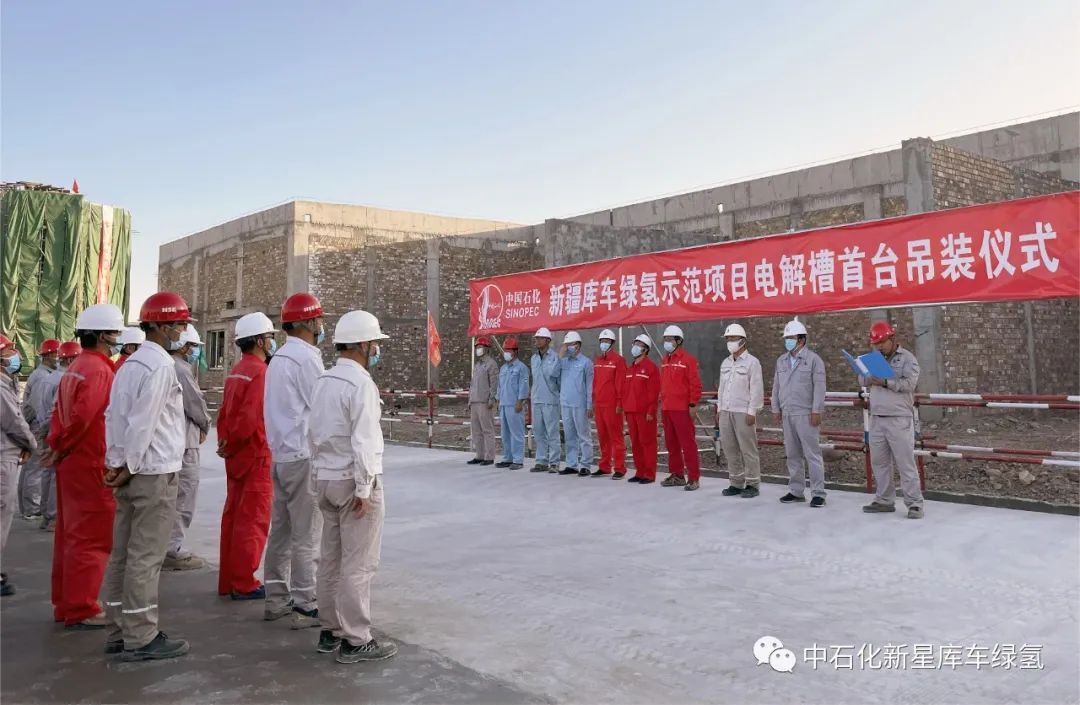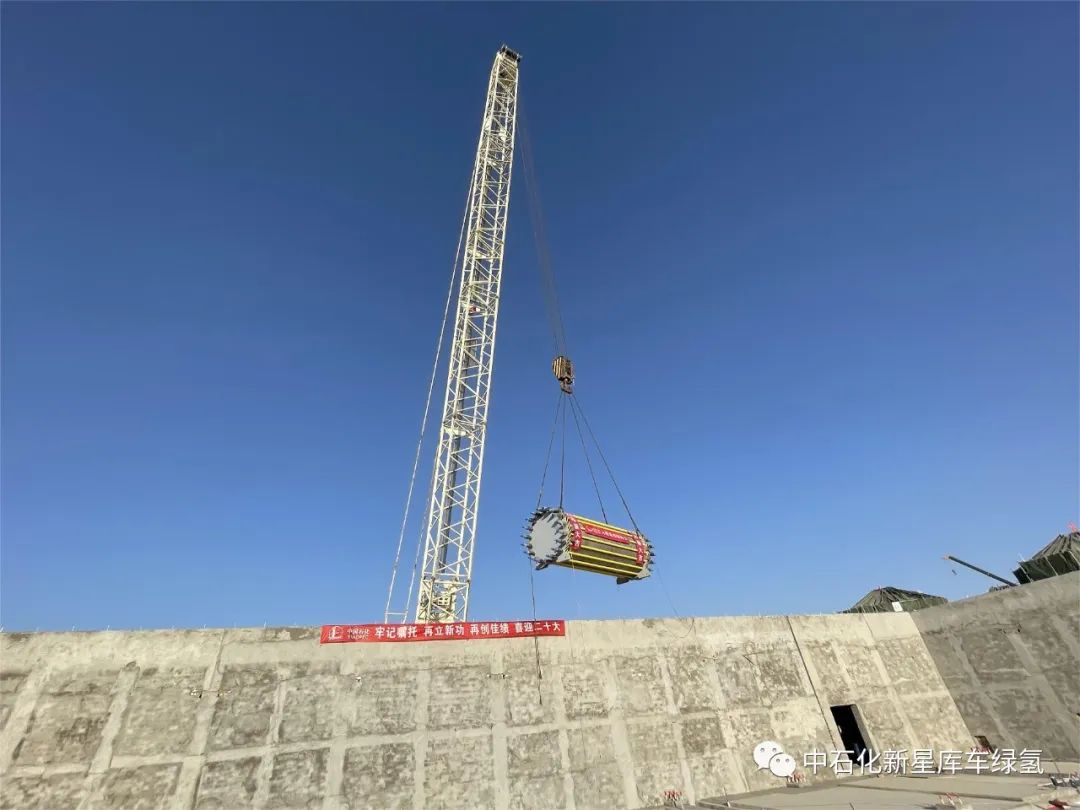On September 3,2022, the first electrolytic cell of Xinjiang Kuqa Green Hydrogen Demonstration Project was hoisted into place, marking that the hydrogen production workshop entered the equipment installation stage. The hydrogen production plant of this project consists of 7 plants, 52 electrolytic cells and complete sets of equipment. The production capacity of a single electrolytic cell is 1000 ㎥ / hour.
According to CCTV Finance report in August 2022, Xinjiang Kuqa Green hydrogen demonstration project will all use photovoltaic and wind power and other renewable energy power generation to produce hydrogen, and the hydrogen production scale reaches 20,000 tons per year, which is also the largest green hydrogen project under construction in the world. Cao Jie, deputy general manager of Sinopec Tahe Refining and Chemical Company, said that Xinjiang is particularly rich in photovoltaic resources for local processing and local utilization, so it is very suitable to explore new energy solutions for hydrogen here. The cost of photovoltaic water electrolysis for hydrogen production is about 18 yuan per kilogram.

Xinjiang Kuqa Green hydrogen Demonstration project has a short construction time, heavy task and high standard requirements. In order to effectively shorten the production time and supply cycle of electrolytic cell equipment manufacturers and accelerate the construction progress of the project, it is produced by Longji Hydrogen Energy, Cocklier and SC 718 respectively.
The photovoltaic part of the project covers an area of more than 9,500 mu, equivalent to the size of more than 900 football fields. The rated photovoltaic installed capacity is 300MW (the long-term planning is 700MW), and the average annual generating capacity is 618 million kWh. For every 58 degrees of green electricity generated, a kilogram of hydrogen can be produced.

In the process of hydrogen production, green electric energy is transmitted to the hydrogen production workshop, and hydrogen is obtained by alkaline water electrolysis. All the hydrogen produced will be transported to the Tahe Refining and Chemical Company near the project for the production of refining units, replacing the original natural gas for hydrogen production. The annual carbon dioxide emission reduction is about 500,000 tons.
Taking Sinopec as an example, in order to achieve carbon emission reduction in the refining process, the amount of hydrogen that can be replaced by green hydrogen is 2.1 million tons, accounting for about 48% of the total amount of hydrogen. If the current market price of 20 yuan per kilogram is calculated, the market size exceeds 42 billion yuan.
Ling Yiqun, deputy general manager of Sinopec, said: We expect that in the future, the whole petrochemical industry will be replaced by green hydrogen through green electricity and green hydrogen. In the future, the industrial scale will be at least 100 billion yuan.
The heat of 1 kg of hydrogen is equivalent to that of 4 liters of gasoline. At present, the cost of producing green hydrogen in China is about 20 yuan per kilogram. With the iteration of new energy power generation and water electrolysis technology, the cost is expected to be greatly reduced. At the same time, the surplus new energy from the western region can be made into hydrogen and sent to the central and eastern regions through the existing natural gas pipeline.


